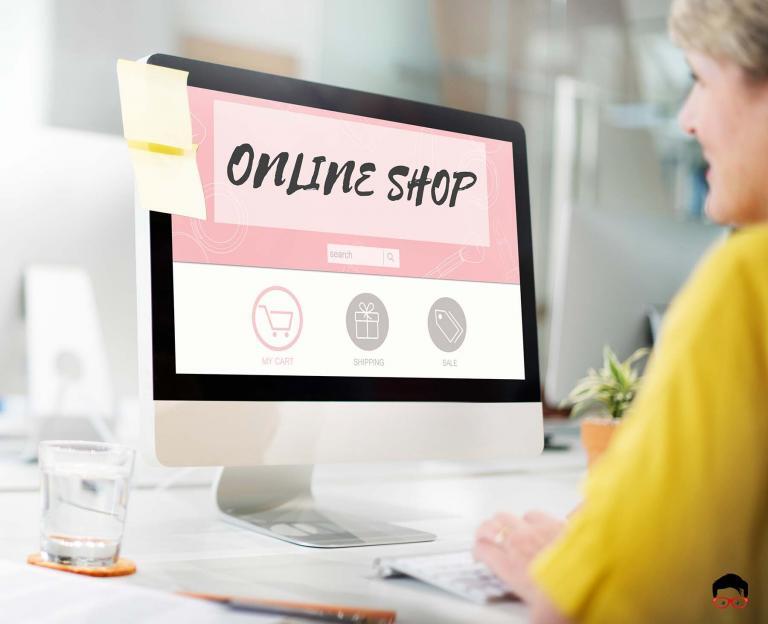In 2020, total global retail spending online surpassed 4.2 trillion, and that number continues to grow. As a result, having an online store is now more critical than ever before. However, setting up an online store can be overwhelming if you’re not a techie. Growing your online presence, competing with other sellers, and scaling requires a comprehensive approach to online sales.
This post will teach you how to create an online store to leverage the growing online shopping demand.
We will cover:

Planning Your eCommerce Strategy
Planning is the easiest way to ensure that you’ll have a successful strategy. By getting it right in this stage, you’ll be a step closer towards making a success of your venture in addition to clarifying your goals. Besides, planning different aspects of your eCommerce strategy ensures that you know what to do and when – and that you will not rush or compromise on quality.
1. Identify Products
Most aspects of your online business, including inventory, marketing, and finances, are directly influenced and affected by the products you choose to sell. Without a solid product line, your store will have a daunting task even before it launches. Product research is a crucial aspect of determining what line of products to deal with because it helps you answer questions like:
- Is there a demand for the product? You want to know whether people are already buying a product before you can start selling it.
- Is the product easy to source? Without a consistent supply of the product and at a reasonable price, your store’s sales could quickly come to a halt as you gain momentum.
- Is your product easy to ship? In an era of online shopping, customers have come to expect fast and free shipping. This expectation means that the product’s weight, size, and dimensions will significantly determine what to sell.
After your research, you will probably have an idea of what products to sell. However, that’s not all because you need to figure out a buyer as well. Having a great understanding of your customer base early enough helps you plan marketing strategies, form pricing decisions, and create a brand story. For instance, if you’re selling jewelry, the characters and traits of your target audience would be different from someone selling pet foods.
Once you’re aware of the type of customers you want to attract, you should focus on connecting with them. If you’re familiar with the industry you’re setting up an online store in, you will quickly understand your customer’s needs and wants. But, for specialized or niche markets, having a comprehensive understanding of the consumer’s lifestyle is essential to connecting with the audience.
Identifying products also requires you to study your competition to see what they are doing. It would help if you understood which of your competitors rank lowest for keywords specific to your niche to have a list of ones that will bring traffic to your store. It would be best if you also approached their stores like a potential buyer to see what they’re doing that works and what doesn’t work. Please take note of their pricing and shipping options. What are they giving their customers? Is it already simple, or could you simplify it for your audience? What websites link back to them? What social media platforms do they use?
Equipped with all this information, you will quickly identify products that will attract huge sales from your online store.
2. Build an Audience
Next, you need to build an audience. There are several ways to go about it: speaking to your existing customers or past customers. Inform your current customers and past customers that you’ll be launching an online store soon. The more customers you inform, the better the chances of your online store succeeding will be.
Don’t forget to use social media to build an audience. Create social media accounts for your online store. Write down what sites you’ll be using (Facebook, Twitter, YouTube, etc.), and then write out a blueprint on how often you’ll create relevant content for those accounts.
In short, your strategy needs to include using social media to build an audience. Besides that, ask for referrals from new customers or existing customers. Getting referrals is one of the best ways to generate free traffic to an online store once the store is live.
3. Learn Pre-Selling Techniques
Pre-selling techniques include marketing your store via social media, newsletter distribution, and catalog mailings, etc. You want to spread the word about your online store before it’s even launched. It would help if you started marketing your store at least a month in advance of its opening.
You want to get people interested and make them intrigued. So post on social media regularly about your soon-to-be online store. Talk about how valuable and cool your product/products are and how affordable your store will be. By doing these things, you’ll generate a ton of interest in your store, even before it’s officially launched.
Before you set up an online store, you want to gain the confidence required to have a successful launch. By learning pre-selling techniques, building an audience, and researching winning products, you’ll increase your chances of setting up a successful store. You mustn’t rush the strategy-planning process. Take your time, and then execute your strategy when you have a clear blueprint.

Setting Up Your Online Store
When you set up an online store, you’ll need to choose a domain name. You also need an eCommerce platform. Finally, let’s not forget about choosing a website builder and setting up payments. That said, here’s how to go about all that stuff.
1. Choosing A Domain Name
Do you already have a brand? How about a name for your current brick-and-mortar store? If so, then select that name for your website. Otherwise, you want to take the time to choose the right domain name.
Think about what products and offerings you’re going to be doing. Then, try to choose a domain name that lets people know what you’re selling. For example, you could choose something like “fitnessforshort.com” if your target market is short guys after workout clothes. Also, try to choose a domain name that is catchy and memorable.
When you have a list of potential domain names, it’s time to check with companies such as DomainJim and GoDaddy. You can use their search features to find out if specific domain names are available. If the one you want is, then register it with DomainJim or another domain registrar.
2. Choosing an eCommerce Platform
There are many eCommerce platforms, but you should stick with the most popular and established ones. The list includes solutions such as Magento, OpenCart, and WooCommerce. Other good platforms include Shopify and Volusion.
Before settling on an eCommerce platform, you want to compare a few. First, look at their features and packages available, as well as how much those packages cost. Then, choose a solution that offers an easy navigation experience and one that allows you to expand as your online store grows.
Also, choose a platform that offers any additional features you may want to use—other features like incorporating third-party apps and SEO-friendly options.
Finally, let’s not forget to mention you also need to consider hosting. Again, you can pick a solution that includes hosting or a custom managed business hosting solution.
3. Setting Up Payments
When setting up your online store, think about what payment gateway you will use. The top payment gateways include PayPal, Stripe, and Payline. Others include 2Checkout and Authorize.net.
You want to choose a payment gateway that can easily integrate into the eCommerce platform you choose. Furthermore, they should allow you to accept payments of all types, including credit cards, electronic checks, debit cards, and so forth. Besides that, check the payment gateways’ fees because you want to choose one with low costs.
Here’s another tip, consider a payment processor that allows you to accept Bitcoin as a payment. Bitcoin and cryptocurrency, in general, are increasingly becoming popular forms of compensation. By taking this as a form of payment, you’ll be gaining an edge over your competitors.
4. DIY – Choosing A Website Builder
Finally, choose a website builder or use a professional eCommerce website developer. The better builders make it easier for you to design your online store.
The bottom line is you want a website builder that allows you to create a well-designed store that will drive results. It should have drag-and-drop, and a WYSIWYG editor too. As a rule of thumb, make sure you compare at least 3-5 website builders.
Do not underestimate the importance of choosing a good eCommerce platform or eCommerce developer. Using the right website solution and setting up payments are equally essential and can directly impact your store.

Launching Your Online Store
Now is the time to launch your online store. When you have everything ready, it’s time to begin. With that said, you want to do the following:
1. Pre-Launch Activities
There are several pre-launch activities you should do, with one of them being SEO. First, implement SEO for your site and create a separate blog as an extension of your website. Then, publish SEO-enriched articles on your blog posts and link back to your leading site regularly. Eventually, your blog posts could rank in the search results for related search terms for your store.
Create a waiting list. Mention to anyone you know or speak to that you’re about to launch an online store. Put them on a waiting list and then notify them on the day your store goes live.
Another thing you need to do is content marketing. First, create content relevant to your online site and then market that content via different avenues, including social media and blogs.
Social media marketing is another pre-launch activity you want to do. Choose 3-4 social media sites and start trying to build an audience on them. Consider paying to advertise on them since running ads is one of the easiest and fastest ways to generate traffic to an online store.
Video marketing should also be part of your pre-launch strategy. Create several videos about your soon-to-be store and its products. These videos will generate buzz for your store.
2. Things You Should Get Ready For
Get ready to answer questions about your products. If your launch is wildly successful, then be prepared to receive many questions about your store, products, and so forth. You can create a FAQ page, reducing the number of inquiries you get on launch day. Nonetheless, it’s still a good idea to be prepared to answer questions.
Email sequencing is another thing. Figure out how often (the frequency) you will email customers. Email sequencing, when done correctly, can be a potent tool.
3. What to Do on Launch Day
Finally, on launch day, you should keep an eye on things. Try to be around for most of the day because anything can happen, or something can go wrong. If you’re keeping an eye on things, then you can fix issues quickly.
Also, on launch day, you want to measure results. For example, how many people are visiting your site, and how many conversions are you getting? Knowing such things can be of great help in the future because you can use data to tweak your strategy.
After you have launched, you need to sit back and wait for the sales to come in. It might not happen right away, but eventually, it will. Just make sure you continue to market your online store. Marketing is how you’ll ensure it is a success.
Your Online Store Checklist
We know that the above is a lot to take in, but it is necessary. Plus, all those things will improve your chances of success. With that said, to summarize the above, you want to:
- Create your strategy
- Find products
- Choose a domain name
- Select an eCommerce platform
- Determine what payment processor to use
- Use a website builder or eCommerce Professional
- Implement pre-launch strategy (SEO, content marketing, and so forth)
Launch your store
That is all there is to it. Launching an online store may not be as hard as you think it is. Just keep the above in mind, and you’ll be fine.
That is how to set up an online store, but now is the time to act. Whether you already have a physical store or want to open an online store, now is the time to do it because online shopping continues to grow. If you don’t launch your online store anytime soon, then you are truly missing out.
Quick Web Designs is a full-service web design and digital marketing company that provides expert services.
Contact us to book your appointment with a web strategist. “Are you looking for help with getting your offline store online?” Our team has years of experience helping companies increase their online sales and brand awareness.
Contact our team today to schedule a free consultation with a web strategist.
Need something else? Challenge us! We’re here to help you grow.







